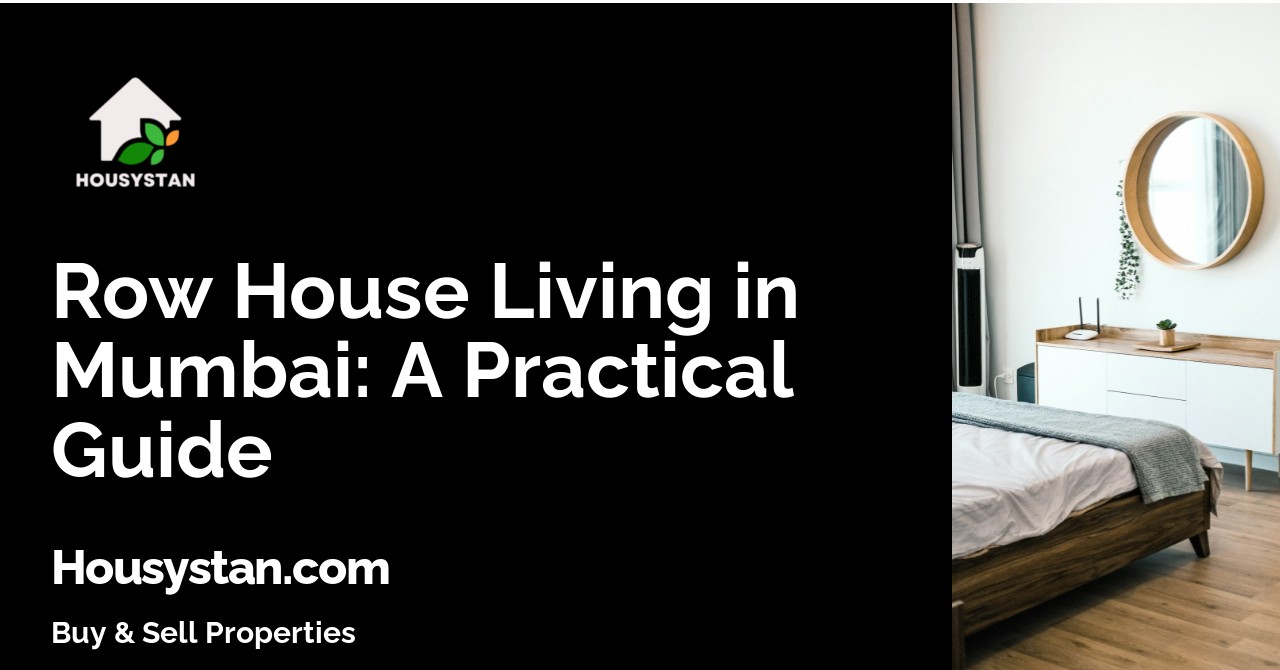Row House Living in Mumbai: A Practical Guide
Read latest blogs and articles from Housystan

The Information mentioned here was last updated on:
25/11/2025Row House Living in Mumbai: A Practical Guide
Choosing row house living in Mumbai offers a unique blend of privacy, community, and convenience, making it an increasingly popular option among homebuyers in the city. Row houses in Mumbai combine the charm of independent homes with the security and amenities of gated communities, providing a perfect solution for families seeking a balanced urban lifestyle. Whether you are relocating to Mumbai or searching for a new investment opportunity, understanding the essentials of row house living in this dynamic metropolis can help you make an informed decision.
Row houses in Mumbai are typically located in well-planned neighborhoods such as Bandra, Andheri, Powai, and Chembur. These areas offer excellent connectivity to business districts, reputed schools, hospitals, and entertainment zones, ensuring that residents enjoy both convenience and comfort. The architectural style of row houses often reflects a harmonious blend of traditional aesthetics and modern design, allowing homeowners to enjoy spacious layouts, private gardens, and ample parking space within a secure environment.
- Verified Tenants/Buyers
- Unlimited Property Listing
- Zero subscription/charges fee
One of the main advantages of row house living in Mumbai is the sense of community it fosters. Residents benefit from shared amenities like gardens, clubhouses, playgrounds, and walking tracks while still enjoying the privacy of their own homes. Security is another key feature, as most row house complexes employ round-the-clock surveillance and controlled access, offering peace of mind for families.
Maintenance is simplified, with professional management handling landscaping, cleanliness, and repairs. This allows homeowners to focus on enjoying the vibrant Mumbai lifestyle without the hassle of everyday upkeep. Additionally, row houses often appreciate in value due to their prime locations and growing demand, making them a solid investment choice in Mumbai's real estate market.
When searching for row houses in Mumbai, consider factors such as proximity to workplaces, neighborhood safety, availability of essential services, and future infrastructure developments. Collaborate with local real estate agents who specialize in row house properties to find options that align with your needs and budget. Whether you desire a peaceful retreat or a bustling urban setting, row house living in Mumbai offers a practical and rewarding way to experience the city’s dynamic spirit.